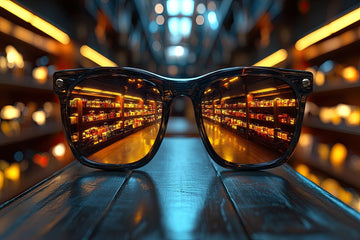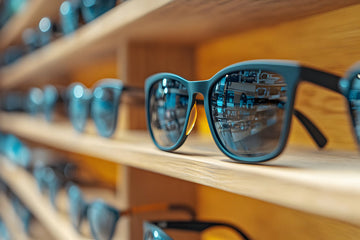- UV Protection
- Lens Tint
- Glare
- Frames
UV Protection
Darker lenses do not necessarily mean they offer better eye protection. Research shows that excessive exposure to UVA and UVB rays can result in harmful eye damage such photokeratitis, cataracts and macular degeneration. Wearing designer wholesale sunglasses can help block these damaging rays, preserving vision.
Lens Tint
The darker the sunglass lenses, does not mean more protection for eyes. The color of the lenses is often simply a personal preference based on sun conditions and activities. Bright sunlight often means people are subject to higher levels of reflective light and may prefer copper, dark amber or brown tone lenses. Wholesale sunglasses that are for use on the ski slopes, work best with a variety of yellow or orange lenses to help increase flat light. Partially cloudy days experience enhanced clarity with rose or amber lenses.
Glare
Glare poses a problem when wearing bulk sunglasses outdoors in the sun. This makes driving especially difficult, as focusing on the brightness and certain angles of the road can be challenging. Polarized lenses significantly help make driving easier. In fact, polarized lenses are excellent for reading outdoors and reducing overall glare.
Frames
Light infiltrates the eyes from all angles, through the front, top, sides and bottom. Wholesale designer sunglasses offer a wide variety of frame sizes. Smaller frames help keep light away from the eyes. To help combine eye protection, consider wearing a wide brimmed had to provide full face and eye protection.
Sunglasses in bulk offer a wide variety of sizes and stores will need to order different frames to ensure a proper fit. A good fit ensures that frames will not slide down the nose or fall off during activities. If sunglasses are designed for active use, consider purchasing a gator, which is a band-style neoprene retainer that attached to both temples, securely keeping glasses in place.
Frames should fit properly because not only does sunlight reflect UV rays, but also water reflects 100-percent of UV rays. Concrete and dry sand reflects up to 25-percent and grass can reflect up to three-percent.




